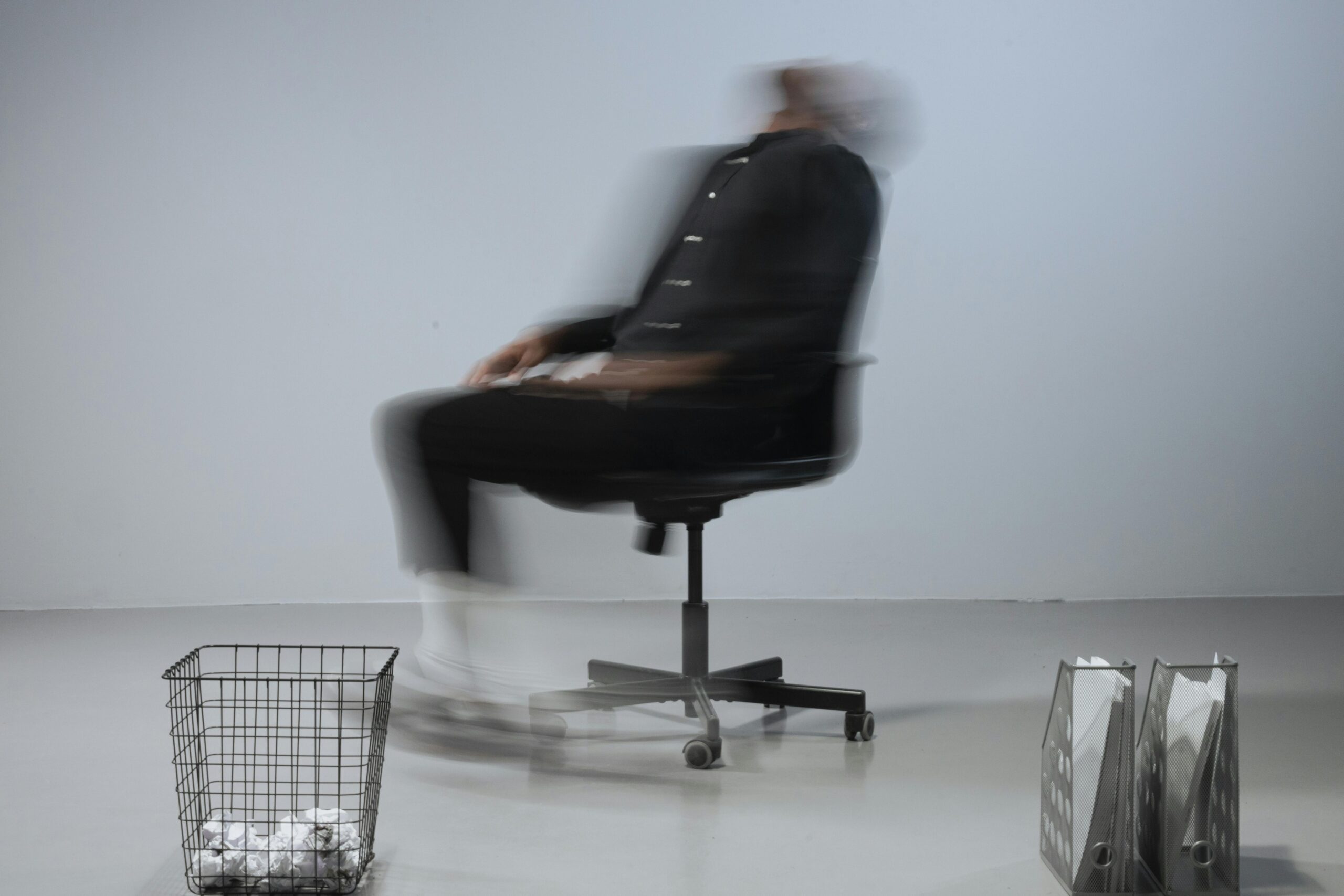Yes, reducing body tension through architecture can be achieved by creating spaces that promote relaxation, proper posture, and physiological well-being.
Here’s how:
1. Ergonomic Design
Incorporation ergonomic principles into furniture, workstations and spatial design can reduce physical strain. For example, adjustable-height desks, and any furnishings that support proper posture can minimize muscle tension and discomfort.
2. Spatial and Movement Design
Open and flexible spaces can reduce feelings of confinement and stress. Thoughtful layout planning that allows for easy movement and flow can prevent the physical strain associated with cramped or cluttered spaces. Dynamic circulation and open pathways also encourage movement, preventing stiffness from prolonged sitting or static poses.

3. Biophilic Design: Light and Natural Materials
Biophilic design has been shown to reduce stress and promote relaxation.
Natural Lighting: Abundant daylight regulates circadian rhythms and reduces eye strain, while lowering cortisol (stress hormone) levels. Smart, programmable artificial lighting can also be used to mimic real daylight changes.
Warm Ambient Lighting: For spaces mainly used at night, or space like a recovery room, warm ambient lighting should be used. Soft and indirect lighting lowers cortisol levels and promotes muscle relaxation. (Suggest 3000K or warmer, CRI greater than 90.) One example could be this CRI=95 light bulb, which can be dimmed to a warm glow.
Views of Nature: Green spaces, water features, or indoor plants lower stress and muscle tension by triggering relaxation responses. Studies have shown that hospital designs with visual access to nature improve patient recovery rates. (e.g., Maggie’s Centers, and Khoo Teck Puat Hospital in Singapore.)
Organic Shapes: Organic elements, curved walls or fluid geometries mimic natural forms, creating calming visual rhythms compared to harsh, angular lines. A good example may be the Frey House II in Palm Spring. The house is anchored by a large boulder, extending from the interior to the exterior of the house.

4. Acoustic Comfort
Good acoustic design can minimize noise pollution and reduce unwanted reverberation, which are significant sources of stress and tension.
Sound-Absorbing Materials: Soft surfaces (e.g., cork, felt) or acoustic panels (e.g., wood slats, fabric, wood wool) minimize noise pollution, reducing auditory stress that contributes to physical tension.
White Noise Integration: Water features or ambient soundscapes can mask disruptive noises, and help create a quieter, more serene environment.
5. Thermal Comfort
Proper heating, ventilation, and air conditioning (HVAC) systems ensure a comfortable indoor climate, preventing the discomfort that can lead to body tension. Additionally, the use of materials with good thermal properties can help maintain a consistent temperature.
The book Thermal Delight in Architecture, by Lisa Heschong, is a good resource on this topic.
6. Sensory Design
Incorporating elements that engage the senses in a positive way, such as soft textures, pleasant scents, and visually appealing aesthetics, can contribute to a relaxing environment. Tactile materials, such as warm wood, textured fabrics, or heated flooring create sensory comfort, easing tension through touch.
7. Color Psychology
The use of calming colors such as blues, greens, and neutrals can create a soothing atmosphere. Color psychology suggests that certain hues can have a direct impact on our emotional and physical state.
8. Access to Nature
Designing spaces with easy access to outdoor areas, gardens, or even views of nature can significantly reduce stress and promote physical relaxation.
9. Hydrotherapy Facilities
Pools, saunas, or thermal baths (e.g., Therme Vals by Peter Zumthor) use water’s buoyancy to reduce joint and muscle strain. Bathing in warm water promotes muscle relaxation, increases blood circulation, and helps alleviate stiffness. The pressure of water itself can help reduce swelling and improve circulation.

10. Mindfulness Spaces
Dedicated areas for relaxation and mindfulness practices, such as meditation rooms, yoga rooms, prayer rooms, or quiet zones with soft seating, can keep occupants away from unwanted environmental stimulants, providing a sanctuary for reducing body tension.

By thoughtfully considering the aspects above, you, designers, and architects can create spaces that not only meet functional needs but also enhance the physical and emotional well-being of their occupants. In this way, architecture acts as a foundational tool for holistic well-being.
This blog is reader-supported. When you buy through links on this site, I may earn an affiliate commission, with no additional cost to you. If you enjoy reading our content and would like to support us this way, we thank you in advance.


Comments
One response to “Can Architectural Design Help Reduce Body Tension?”
The emphasis on open spaces and good movement flow is so important, especially in high-stress environments. It’s a great reminder that our physical environment plays a huge role in how we feel and perform, beyond just aesthetics.